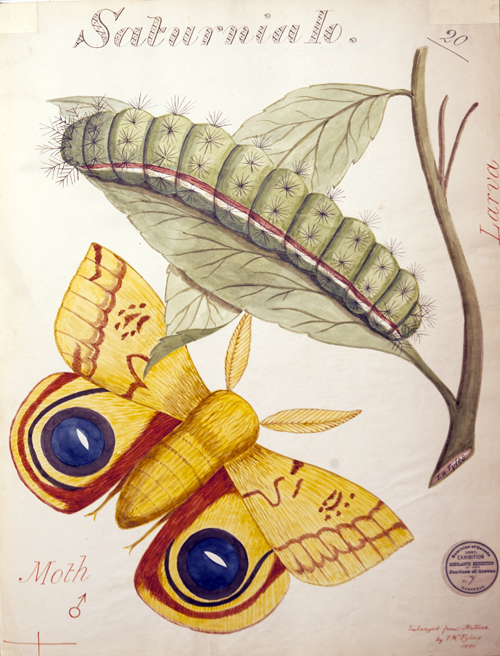
Insects. Bugs. Creepy-crawlies. Some people shudder when they see them, but others find these little creatures fascinating and recognize that understanding them is important to many industries in agriculture, food and environmental services.
If you are someone who shudders, don’t be put off by the fact that a new exhibit in the McLaughlin Library fills several display cases with facts, figures and depictions of bugs, butterflies and their close relatives.
“Insects! Insects! Vignettes of Canadian Entomology” features fascinating historical material drawn from the library’s archives and assembled by statistics professor Gary Umphrey and retired environmental sciences professor Mark Sears.
Professionally, Umphrey is a numbers guy, but he has a passionate interest in the study of insects and the history of entomology. He says the entomological material in the archives dates back more than 150 years, to the date in 1863 when the first Entomological Society of Canada was founded. Yes, that’s four years before Confederation.
The society was renamed the Entomological Society of Ontario (ESO) in 1871 following a pledge of support from the Ontario government. But even after the name change, Umphrey says it still operated in many ways as a national organization with branches in other provinces. The first headquarters were in Toronto, but the organization soon moved to London and eventually Guelph in 1906, where it became affiliated with the Ontario Agricultural College (OAC). Today, the group’s library and archives are housed in the University of Guelph Library.
In 1950 the Entomological Society of Canada was formed, and ESO became a provincial organization. The two societies will celebrate their 150-year shared history of insect science at a four-day gala conference in Guelph Oct. 20 to 23. The library exhibit honours this occasion, providing a glimpse into the history of the study of insects in Canada for both conference-goers and the Guelph community.
The task of arranging 150 years of Canadian entomological history into displays is, not surprisingly, a bit daunting, says Umphrey. He appreciates the help of library archives staff Michelle Goodridge, Melissa McAfee and Kathryn Harvey, who have arranged and organized the displays. “Mark and I would like to have everything possible crammed into the displays, but the archivists help us sort things out and arrange them,” says Umphrey. “We know we can’t really get everything in, but we’d like to.”
The collection includes what Umphrey describes as “some very old, very cool volumes” such as books by Carl Linnaeus, who is known for developing the system used for naming plants and animals. A number of photos are in the collection, including one taken at the ESO’s 50th anniversary in 1913. The event was held at OAC, and one of the people in the photo is George Creelman, who was president of OAC at the time.
A former ESO president, Sears says that in the early 1900s the society gathered books and materials and traded journals and publications with other societies. “This was really cutting-edge at the time – the scientific descriptions and careful illustrations of the insects.”
Part of the library exhibit shows how these illustrations have evolved over time. It begins with drawings of insects, some hand-coloured, and continues the evolution through etchings and wood-cuts, pen-and-ink drawings, early photography and more advanced photographic techniques. A recent development, says Sears, is a photo taken with an electron microscope: “You get an image magnified thousands of times and can see the tiniest feature of the insect in great detail.”
Another display of how insects help people is also a reminder of U of G’s connection with the world of insects. Honeybees are naturally highlighted in this particular section, and Sears points out that bees have been part of the campus since the 1890s. At one time, in fact, OAC had an apiculture building located where the University Centre now stands.
Sears adds that new technology provides novel ways to bring alive the history of entomology in Canada; this year, the group is preparing a digital scrapbook. “We want to leave something for the future,” he says. It’s evidence that the importance of understanding insects and their role in agriculture and the environment continues.